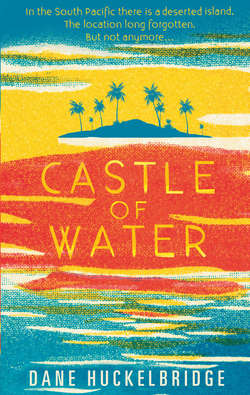Читать книгу Castle of Water - Dane Huckelbridge, Dane Huckelbridge - Страница 18
Оглавление11
Bananas, coconuts, pools of fresh rainwater, clusters of accessible clams—the supplies that the island provided may have struck Barry and Sophie as a convenient accident, but their existence owed far more to the prescience of Polynesians than to the generosity of Providence. Barry and Sophie did not yet realize it, but they were hardly the first visitors to land on the island—in fact, early Polynesians had beaten them to it by hundreds of years. For while medieval Europeans were still clinging like frightened children to the wading pool wall of the Atlantic, these bold and inventive people were venturing into the deep end of an entire Pacific hemisphere, landing their immaculately carved outrigger canoes in such far-flung places as Samoa, Easter Island, New Zealand, Hawaii, Tahiti—and, eventually, even the tiny island that Barry and Sophie came to call home.
To those ancient Polynesians, a three-thousand-mile voyage over open seas was nothing, a mere interstate road trip to see the grandparents in Illinois. But as is the case with any good road trip, a few rest stops were in order, to stretch the legs, relieve the bladder, and restock supplies. And with Motel 6 and Wendy’s still a ways in the offing, these Polynesian adventurers had to get creative. In effect, they created their own rest stops, and Barry and Sophie’s island had once been just such a place. No, the barren scrap of rock the Polynesians discovered was far too small for long-term habitation. But that didn’t mean they couldn’t plant a few banana trees, seed a few clam beds, release a few pigs and chickens, and stop there for the night when they needed a break. They even carved a pair of cisterns into the island’s central rock face, with channels carefully chipped away to coax in the rain. The island served its purpose wonderfully, becoming a regular Howard Johnson’s on the oceanic highway that connected a widely dispersed and highly peripatetic society for more than five hundred years.
Then, with the arrival of that first wave of colonially minded Europeans, all of that came to a grinding halt. By the time Gauguin landed in the Marquesas in the late nineteenth century, such times were largely forgotten, with a formerly seafaring people having become more or less sedentary in their habits and the uninhabited island in question erased from their cultural memory. It was last visited by Polynesians in the year 1762, when a Tahitian prince known to the history books as Tu-nui-ea-i-te-atua-i-Tarahoi Vairaatoa Taina Pomare spent a week there with his entourage on his way to visit distant cousins in Eiao, and last alighted upon by Westerners in 1767—Samuel Wallis of the HMS Dolphin dropped anchor there for the night while circumnavigating the globe, killing every wild pig and chicken on the island in the process. The coconuts, bananas, cisterns, and clam beds prevailed, however, dutifully awaiting the next batch of travelers in need of sanctuary—who, as we now know, happened to arrive almost two and a half centuries later in the form of one Barry Bleecker and one Sophie Ducel.
Not Providence, exactly, but providential indeed.
